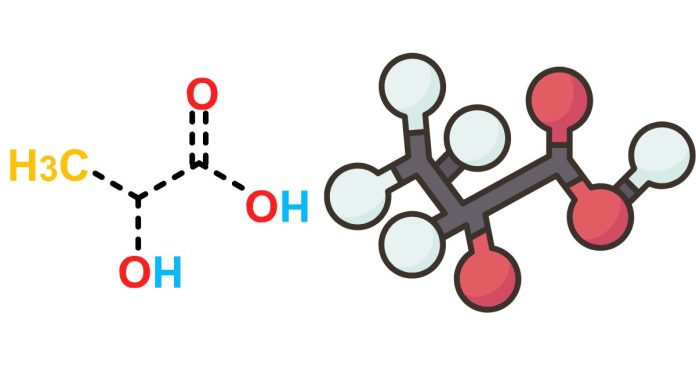Lactic acid fermentation is a biological process that plays a critical role in energy production for certain organisms and cells, particularly in anaerobic conditions (when oxygen is scarce). This process allows cells to generate energy in the form of ATP while converting glucose into lactic acid. But what exactly is the chemical equation for lactic acid fermentation? Let’s dive in.
Overview of Lactic Acid Fermentation
Lactic acid fermentation occurs in various organisms, including some bacteria, fungi, and animal cells (like muscle cells during intense exercise). This process is an anaerobic alternative to aerobic respiration, enabling energy production when oxygen is unavailable.
The Chemical Equation
The simplified chemical equation for lactic acid fermentation is:
C6H12O6 (glucose) → 2 C3H6O3 (lactic acid) + 2 ATP
Let’s break this down:
- C6H12O6 (glucose): This is the starting molecule, a simple sugar that serves as the primary energy source.
- 2 C3H6O3 (lactic acid): Two molecules of lactic acid are the main byproducts of this process.
- 2 ATP: Two molecules of adenosine triphosphate (ATP) are produced, providing energy for cellular activities.
Steps of Lactic Acid Fermentation
Lactic acid fermentation involves two main stages:
- Glycolysis:
- In the cytoplasm, glucose (C6H12O6) is broken down into two molecules of pyruvate (C3H4O3), yielding 2 ATP and 2 NADH (nicotinamide adenine dinucleotide).
- Glycolysis is the same initial step in both aerobic and anaerobic respiration.
- Reduction of Pyruvate:
- In the absence of oxygen, the pyruvate molecules are reduced to lactic acid (C3H6O3) by NADH.
- This step regenerates NAD+, allowing glycolysis to continue.
Importance of Lactic Acid Fermentation
Lactic acid fermentation is vital for:
- Energy Production in Low-Oxygen Environments: Cells, like those in muscles, use this process during intense exercise when oxygen supply is limited.
- Food Production: Many fermented foods, such as yogurt, sauerkraut, and kimchi, rely on lactic acid fermentation for their characteristic flavors and preservation.
- Survival of Microorganisms: Certain bacteria, like Lactobacillus, thrive in anaerobic conditions using lactic acid fermentation.
The chemical equation for lactic acid fermentation, C6H12O6 → 2 C3H6O3 + 2 ATP, illustrates how glucose is converted into lactic acid and energy in the absence of oxygen. This process is essential for various organisms and applications, from muscle function during exercise to the creation of delicious fermented foods. Understanding this pathway helps us appreciate its role in both biology and everyday life.


